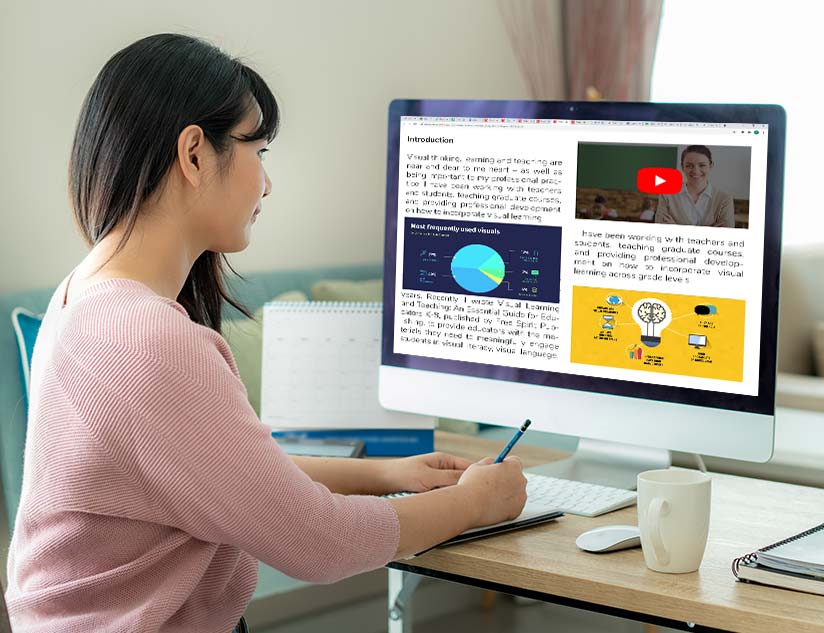As the COVID-19 pandemic started spreading across the world in March 2020, the education sector was one of the worst affected. At first, international students could not return to their schools and colleges, due to travel restrictions. But as time went on, the number of cases increased exponentially. Having on-premise classes was no longer a safe option. By the end of March 2020, around 1.5 billion students were affected by school closures.
Thankfully, digital learning came to the rescue. eLearning allowed students to learn without having to step outside the safety of their homes. But this sudden and widespread transition to digital classrooms brought some challenges with it.
Challenges of Digital Transformation for Higher Education
Here are some of the main challenges that digital transformation has brought to light and how they can be overcome.
1. Student Privacy and Information Security
When it comes to anything related to the internet, the security of data and privacy is one of the biggest concerns. It isn’t any different for digital learning. Such concerns are well-founded as well, as was seen shown in the case of the data loss through the Zoom video conferencing app. If the correct data protection measures are not taken, students’ sensitive information and metadata could be at risk.
How to Overcome Security & Privacy Issues
One of the biggest steps for protecting student data and privacy is to choose a powerful digital learning platform that is compliant with the Family Educational Rights and Privacy Act (FERPA) and Children’s Online Privacy Protection Act (COPPA). These are laws that have been specifically put in place to regulate the gathering and use of student information. Under these laws, students and their parents have the right to review the data that is being stored. Additionally, there should be secure log-in procedures for students as well as teachers.
2. Student-Centric Higher Education
The shift from traditional learning to a digital classroom is still in its nascent stages for many institutions. This has meant that some of the practices of the traditional method have transferred to online learning as well. One such thing is teacher-centric education. This is despite digital learning providing a great opportunity to create a student-centric eco-system.
Building a Student Centric Eco-System
Creating a student-centric eco-system can be made possible by using the right digital platform to deliver education. A platform with just the right apps can ensure that personalized learning is enabled, while robust analytics helps teachers track the performance of each student and plan individualized learning paths. Being able to personalize learning to the needs of each student can ensure enhanced learning outcomes. Students are better engaged and motivated to learn.
3. Higher Education Affordability
The rising cost of higher education is one of the biggest issues plaguing students. Between 2008 and 2018, the cost of college education across the 50 states of America increased significantly. In fact, the tuition costs rose 37% on average at four-year public colleges. The high fee has persisted even after the switch to a digital medium.
Cutting Back on Costs
One of the reasons for college fees staying high is the inefficient use of resources. Some colleges have been distributing expensive equipment, such as iPads, to students. There are some that are still using hardcopies of textbooks, despite the lessons being conducted via video methods. The costs can be substantially reduced by deploying a robust and feature-rich digital learning platform. Choose one that allows access to learning materials on any device and any OS. This will eliminate the need to invest in new equipment. Plus, there should be access to offline content, such as offline eBooks.
4. Simplifying Administrative Tasks
With advancements in technology, fewer legacy systems are required within the education system. This can make administrative tasks difficult, especially for the older staff members. During the COVID-19 era, where people are already stressed, this can make the situation worse.
The Simple Solution
The first step to resolving this is by providing sufficient training on any new technologies adopted by the institution. Make sure to adopt a digital platform that is intuitive, user friendly and, therefore, easy to use even for those who are not tech-savvy. It should be easy to create, review and revise courses, maintain records, and collaborate with third parties. In case there are any issues, the platform should be backed by prompt and efficient technical support.
5. Relevant Assessments
The assessment process is the backbone of the traditional classroom. But many educational institutions are unsure how to handle assessments in the digital world.
Better than Traditional Assessments
Digital learning provides opportunities to create assessments that provide better information about the learner and in much less time. Teachers can create game-based assessments, standards-based assessments, adaptive assessments and even video assessments. Digital assessment comes with the advantage of analytics, which can be used to provide immediate feedback to students. This can make assessments even more effective.
6. Digital Integrations
Technology can no longer exist in independent silos. This stands true for digital learning as well. There is a need for collaboration between different departments and the ability to use multiple technologies to ease education.
Integrations & Collaboration
With powerful platforms that ease the integration of third-party apps, students and teachers can collaborate with each other using message boards and discussion forums. In addition, institutions can choose features and functionalities that will help provide an enriching learning experience.
Conclusion
The switch to digital learning has proved to be a boon for the education sector. Its benefits are not just limited to providing remote education. In fact, it can prove to be a better option than the traditional method. However, to get the most out of digital education, the right digital platform is indispensable.











